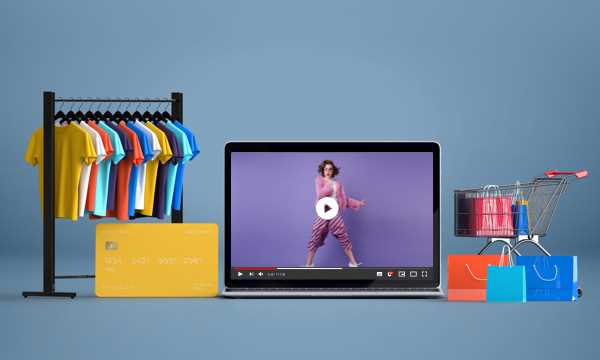Search here

14-Nov-2024 , Updated on 11/14/2024 2:05:38 AM
How Shoppable Ads Work In Sales And Marketing?
Shoppable ads have hence changed the course of e-commerce in that, through them, one can buy the product without being redirected to another site. It is proving to be a valuable capability for brands that seek to enhance the shopping experience within social and digital ads. In this, we look at how shoppable ads work, the advantages of such ads, and how they are influencing the consumer and business marketing success rate.
1. Understanding Shoppable Ads
Shoppable ads refer to advertisements displayed across digital platforms where the customer is able to buy the product shown in the advertisement. It’s usually spotted on social networks, websites, or even platforms such as Netflix streaming services, where products can be bought directly by integrating the links. This removes the barriers that users have to cross within the customer journey map, making it easier for consumers to transition from awareness to demand.

2. Shoppable Ads for Sales Conversion: A Review of Their Advantages
Shoppable ads greatly assist in enhancing the conversion rate of sales because they reduce the time spent by a buyer. There is an idea, following which, users will have more chances to complete the purchase with fewer steps. This immediacy corresponds with impulse buying behaviors, which mean fast decisions that are crucial in today’s fast-evolving online environment.
- Enhanced Customer Engagement: Digital advertisements therefore make the sales promotional experience exciting by integrating images into the advertisement with links to products. It allows brand developers to share a message and create a designated call to action that can result from this.
- Data-Driven Insights: These ads enable brands to understand how users react towards their ads in order for them to improve their strategies.
3. Types of Shoppable Ads
There are multiple forms of shoppable ads, each tailored to a specific platform or audience engagement method:
- Social Media Shoppable Ads: Specifically, with Insta-Shop and Facebook buy buttons, customers can click on tagged items and complete a purchase. This has been especially so in the case of fashion and lifestyle businesses.
- Video Shoppable Ads: Social media and video sharing portals such as YouTube have adopted purchase-led ads that make shopping from the video interesting.
- Livestream Shopping Ads: Livestreams have been applied to heighten the real-time experience of shopping. This is where the consumer is glued to the program since they relate to the products discussed in real time. Such programs are characterized by high engagement and instant purchase rates.
4. Effect on Customer Engagement and Loyalty
Shoppable ads engage users more and simultaneously add customer loyalty through complete shopping processes. As the ability of a user to interact with a brand without leaving improves, the chances that the user may remember that brand for his next purchase increase. This brings out greater customer lifetime value.
5. AI and Data Analytics in Shoppable Ads
The best application of AI and data analytics forms the key to guaranteeing the best shoppable ads reach optimal effectiveness. Customer preferences are better understood in terms of allowing personalized experiences likely to lead to conversion. Advanced data tools enable better understanding of audiences by companies, which will further allow them to tailor ads into specific segments of customers with a higher ROI.

6. Advantages and disadvantages of shoppable ads and prospects for the future
Although shoppable ads are rich in so many benefits, they also throw a lot of hassle, like ad fatigue and the high cost of ads. Brands must always balance creativity and functionality to attract attention without overwhelming the user. However, what can be said about the future of shoppable ads is promising; shoppers may make ads more interactive using AR and virtual try-ons.
- Augmented Reality in Shoppable Ads: This shall enable the consumer to view products before purchasing them. Shoppers can perceive what makeup will look like by having a virtual try-on, thus building confidence in their purchase.
- Privacy Concerns: Since shoppable ads depend upon personal data for the campaign, brands need to tread on privacy concerns with clear foresight so as not to lose consumer trust.
Conclusion
Shoppable ads have emerged as a potent tool in the sales and marketing world. Now is the time to bridge that gap between discovery and purchase; give the brands an efficient way to generate growth in sales while gradually cultivating deepening relationships with their customers over the long term. As e-commerce continues to evolve and mature as a medium, shoppable ads will still hold center stage on the podium, continuing to adapt with technology to make even more personalized and alluring experiences for the end customers.

Student
Being a professional college student, I am Shivani Singh, student of JUET to improve my competencies . A strong interest of me is content writing , for which I participate in classes as well as other activities outside the classroom. I have been able to engage in several tasks, essays, assignments and cases that have helped me in honing my analytical and reasoning skills. From clubs, organizations or teams, I have improved my ability to work in teams, exhibit leadership.
Join Our Newsletter
Subscribe to our newsletter to receive emails about new views posts, releases and updates.
Copyright 2010 - 2025 MindStick Software Pvt. Ltd. All Rights Reserved Privacy Policy | Terms & Conditions | Cookie Policy